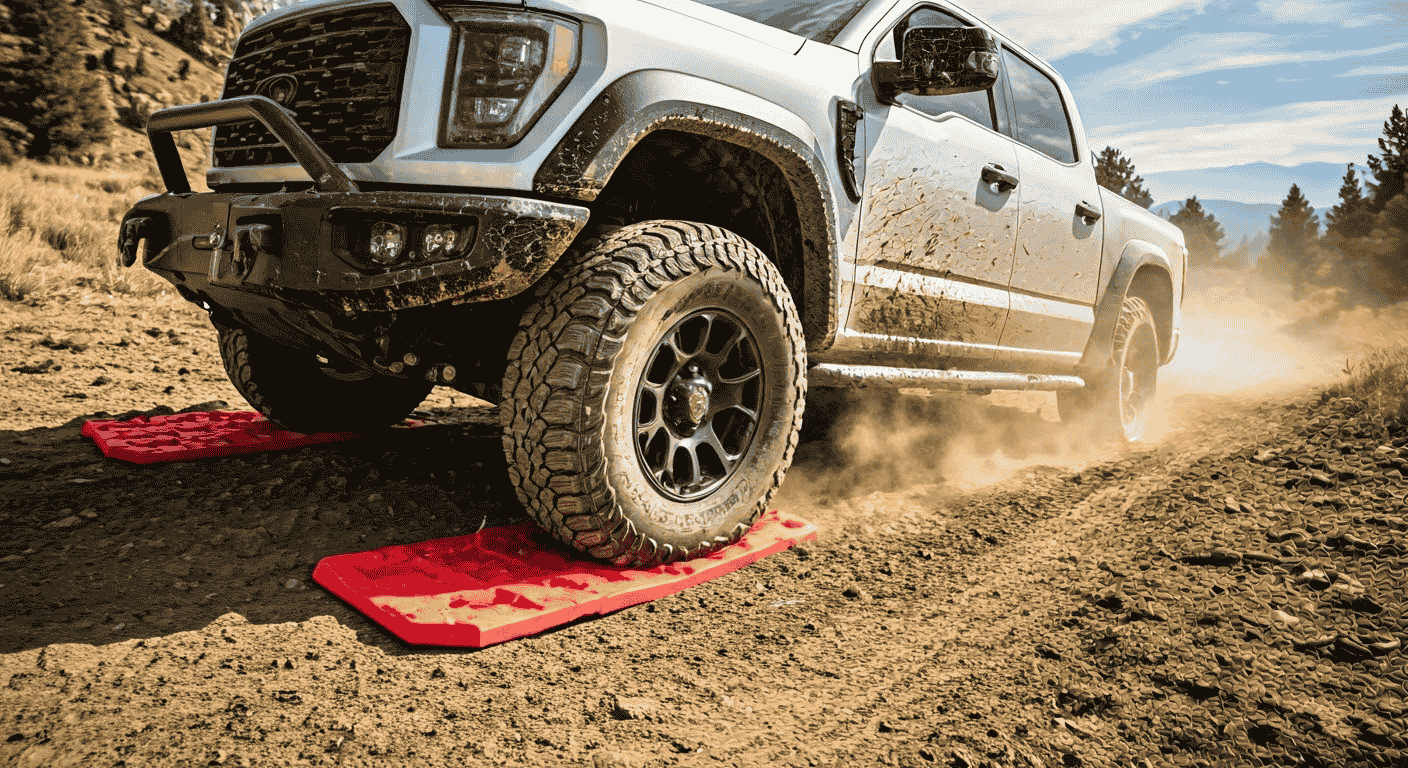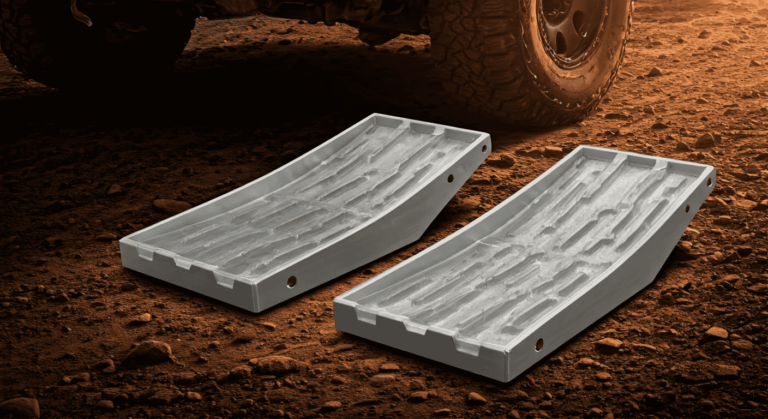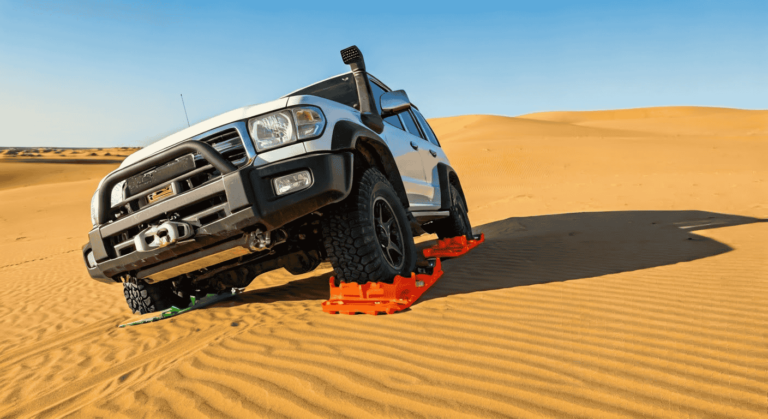Introduction
Traction boards have become an essential piece of gear for off-road enthusiasts and overlanders alike. Whether you’re navigating sandy dunes, muddy trails, or snow-covered paths, these boards provide the extra grip your tires need to get unstuck. Among the various options available, plastic traction boards stand out as a popular choice. But are they worth it? This guide will explore the pros, cons, and practical applications of plastic traction boards to help you decide.
The Growing Popularity of Traction Boards
The surge in off-roading and adventure travel has contributed to the widespread use of traction boards. Overlanders, weekend trail riders, and emergency responders recognize their effectiveness in vehicle recovery. Social media platforms are brimming with stories of adventurers using traction boards to escape sticky situations. Plastic traction boards, in particular, are favored for their affordability and ease of use.
Why Off-Roaders Rely on Traction Boards
Getting stuck is an inevitable part of off-roading. While winches and tow straps offer solutions, they often require a second vehicle or anchor point. Traction boards provide a solo recovery option, empowering drivers to regain traction independently. Their reliability and practicality make them a staple in any off-road kit.
Purpose of This Guide: Evaluating Plastic Traction Boards
This guide aims to provide an in-depth analysis of plastic traction boards. From understanding their construction and benefits to comparing them with other materials, we’ll help you make an informed decision.
What Are Plastic Traction Boards?
- Defining Traction Boards and Their Role: Traction boards are rugged platforms designed to provide grip under a vehicle’s tires. When wheels lose traction, these boards are placed beneath them to create a stable surface for forward movement. Plastic versions are typically constructed from reinforced, high-density polymers.
- The Different Types of Traction Boards Available: Traction boards come in various materials, including plastic, metal, and composite blends. Each material offers different advantages, making it important to choose based on your specific needs.
- Why Plastic Traction Boards Stand Out: Plastic traction boards are especially popular due to their lightweight nature, affordability, and versatility. They are often designed with aggressive tread patterns and reinforced structures for durability.
The Advantages of Plastic Traction Boards
- Lightweight and Easy to Handle: Plastic traction boards are much lighter than their metal counterparts, making them easy to maneuver and store. This is particularly beneficial for solo adventurers and those with limited storage space.
- Durable and Resistant to Weathering: Modern plastic boards are made from UV-resistant, high-density polymers. They withstand exposure to sunlight, moisture, and temperature fluctuations without degrading.
- Cost-Effective Compared to Other Materials: Budget-conscious off-roaders often find plastic boards more affordable than metal or composite options. Despite their lower price, many plastic boards offer exceptional performance.
- Easy to Clean and Maintain: Unlike metal boards that may rust, plastic boards are easy to clean with water. Their non-corrosive properties ensure longevity with minimal maintenance.
- Versatility Across Different Terrains: From mud and snow to sand and gravel, plastic traction boards are suitable for a variety of terrains. Their flexibility and textured surface provide reliable traction in challenging conditions.
The Drawbacks of Plastic Traction Boards
- Susceptibility to Cracks and Breaks: Under excessive pressure or in freezing temperatures, plastic boards can crack or break. Heavy vehicles may accelerate wear and tear.
- Reduced Lifespan Under Heavy Use: While durable, plastic boards generally have a shorter lifespan compared to metal or composite alternatives. Frequent use in rugged environments may lead to warping or structural damage.
- Environmental Impact and Sustainability Concerns: Plastics are not as environmentally friendly as other materials. However, some brands offer recyclable options and sustainable manufacturing processes.
Plastic vs. Other Traction Board Materials
- Plastic vs. Metal: Which One Lasts Longer?: Metal traction boards are undeniably more durable and can withstand heavier loads. However, they are heavier and more prone to rust, making plastic a better choice for occasional use.
- Plastic vs. Composite – Striking a Balance: Composite boards combine the best of both worlds, offering durability similar to metal with a weight closer to plastic. However, they often come at a premium price.
- Plastic vs. Rubber: Grip and Flexibility Differences: Rubber traction aids are flexible and provide decent grip, but they lack the structural support of plastic boards. Plastic remains a more reliable option for vehicle recovery.
When Are Plastic Traction Boards the Best Choice?
- Occasional Off-Road Adventures: For recreational drivers who encounter occasional obstacles, plastic boards are practical and budget-friendly.
- Lightweight Vehicle Recovery Needs: Plastic traction boards are ideal for lighter vehicles, including SUVs, crossovers, and compact trucks.
- Budget-Conscious Off-Road Enthusiasts: If you’re seeking a cost-effective recovery solution, plastic traction boards provide excellent value for the price.
Situations Where Plastic Traction Boards Might Fall Short
- Heavy-Duty Off-Roading and Extreme Terrain: In rock-crawling or heavy mudding scenarios, plastic may not offer the resilience required for repeated use.
- Overlanding and Long-Term Expeditions: Long-term overlanders often prefer metal or composite boards due to their extended durability.
- Recovery in Icy or Rocky Conditions: Extreme cold can make plastic brittle, reducing its effectiveness in icy environments.
Conclusion
Plastic traction boards offer an affordable, lightweight, and versatile solution for vehicle recovery. While they may not be the most durable option for extreme off-roaders, they excel in casual and moderate conditions. By carefully evaluating your needs and considering the advantages and drawbacks, you can determine whether plastic traction boards are the right choice for your adventures.



